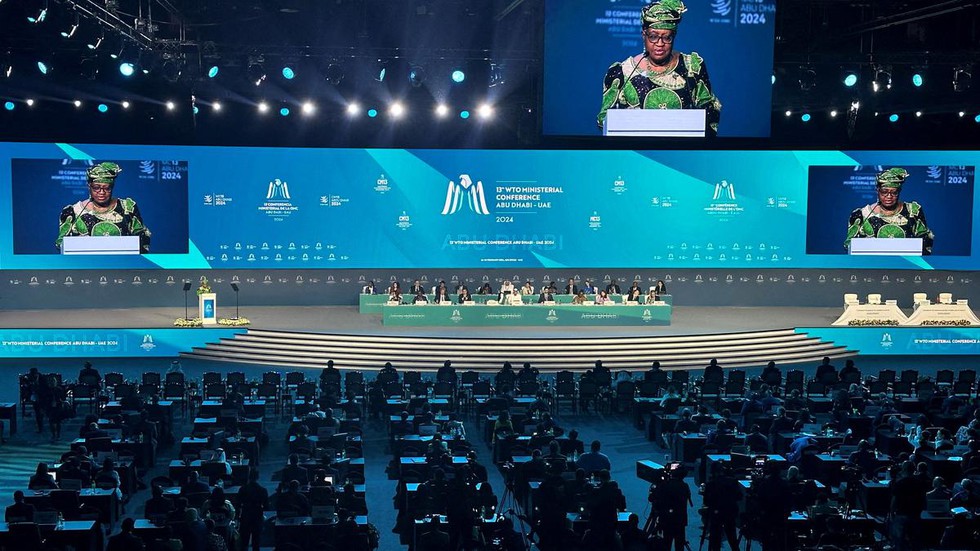At the 13th Ministerial Conference (MC13) of the World Trade Organization (WTO) held in Abu Dhabi, significant discussions took place regarding the adoption of the Agreement on Investment Facilitation for Development (IFD). However, the agreement faced opposition from countries like India, ultimately leading to its non-adoption. The IFD agreement was initiated in 2017 through the Joint Statement Initiative, involving 70 countries, aiming to facilitate investment flows. Despite its finalization in November 2023 and support from over 70% of WTO member countries, challenges persisted during the MC13 discussions.
Content and Objectives of the IFD Agreement:
The IFD Agreement aims to establish legally binding provisions to enhance regulatory transparency, streamline administrative procedures, and bolster foreign investment inflows. Notably, it does not address market access, investment protection, or investor-state dispute settlement (ISDS), which have been contentious issues in recent years.
Role of India and South Africa:
India and South Africa played crucial roles in preventing the IFD agreement from becoming part of the WTO rulebook. India’s concerns primarily revolved around whether investment should be within the purview of the WTO and the process followed for integrating the IFD agreement into the rulebook.
India’s Concerns and Assertions:
- Nature of Investment in WTO: India contends that investment is distinct from trade and questions its inclusion within the WTO framework. Despite arguments highlighting the interconnectedness of trade and investment, India emphasizes the necessity for a clear mandate regarding investment discussions within the WTO.
- Legitimacy of Negotiations: India argues that the negotiation process for the IFD Agreement lacked a proper mandate. Referring to previous WTO decisions, India asserts that the negotiations on trade and investment were not approved by all members, rendering the IFD negotiations and subsequent text legally questionable.
Challenges and Questions Raised:
- Scope of Negative Mandate: Questions arise regarding the scope of the negative mandate concerning trade and investment negotiations. Does it encompass all aspects of investment, including facilitation? The historical context of past negotiations and agreements informs this discussion.
- Multilateral vs. Plurilateral Negotiations: Another issue concerns the applicability of mandates to plurilateral negotiations. While the negative mandate pertains to multilateral discussions, the launch of the IFD negotiations occurred on a plurilateral basis, raising questions about procedural legality.
Potential of Plurilateral Agreements in WTO:
Plurilateral agreements, such as the proposed IFD Agreement, hold significance in revitalizing the WTO’s legislative function amidst consensus challenges. These agreements offer avenues for updating rules and addressing contemporary trade complexities, urging member states to reconsider defensive approaches towards their adoption.
Multiple Choice Questions (MCQs):
- What was a significant outcome of the 13th Ministerial Conference (MC13) of the World Trade Organization (WTO) regarding the IFD Agreement?
- a) Adoption as a plurilateral agreement
- b) Non-adoption despite majority support
- c) Inclusion in Annex 4 of the WTO Agreement
- d) Unanimous support from all WTO member countries
- Answer: b) Non-adoption despite majority support
- What does the IFD Agreement primarily aim to achieve?
- a) Market access expansion
- b) Investor-state dispute settlement (ISDS)
- c) Facilitation of investment flows
- d) Tariff reduction measures
- Answer: c) Facilitation of investment flows
- Which countries played crucial roles in opposing the IFD Agreement’s integration into the WTO rulebook?
- a) China and Brazil
- b) India and South Africa
- c) USA and EU
- d) Australia and Canada
- Answer: b) India and South Africa
- What is India’s primary concern regarding investment discussions within the WTO?
- a) Lack of investment protection measures
- b) Insufficient regulatory transparency
- c) Integration of investment and trade
- d) Limited market access for foreign investors
- Answer: c) Integration of investment and trade
- What is a key question raised concerning the negotiation process of the IFD Agreement?
- a) Inclusion of market access provisions
- b) Scope of the negative mandate
- c) Role of investor-state dispute settlement (ISDS)
- d) Compliance with regional trade agreements
- Answer: b) Scope of the negative mandate
